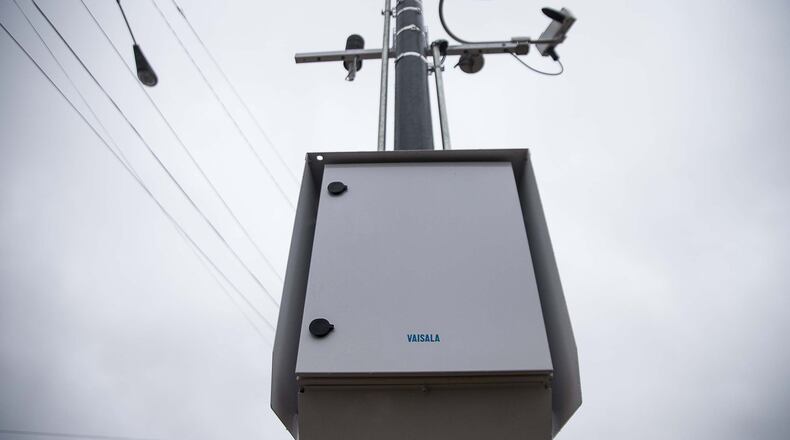Laura Gargis was four months pregnant and terrified when she became trapped on the interstate in the infamous 2014 winter storm known around metro Atlanta as “Snowmageddon.”
Gargis, who lived in west Cobb at the time, was driving on I-285 from Sandy Springs when the weather conditions deteriorated so badly that she was stuck by the time she made it past the Cobb Parkway interchange. Her journey to a friend’s home in Vinings took about 24 hours.
“I was very scared,” she said, adding she didn’t have anything to drink or eat. “Because I was pregnant, I didn’t feel like I could get out of my car. I was frightened and I was alone.”
The treacherous drive home for Gargis and thousands of commuters was enough to convince the Georgia Department of Transportation to install Road Weather Information Systems at strategic areas around the state. Agency spokeswoman Tori Brown said 27 sensors were installed by Jan. 31, 2015.
There are now 56 sensors across the state help transportation officials predict when roads may be less safe and need treatment because of ice, snow and other meteorological conditions.
RELATED | Winter's coming - Georgia DOT says it's ready
In October, Brookhaven became the first city to partner with GDOT to install one of these sensors. It's located on Buford Highway before the North Druid Hills Road Bridge west of Interstate 85 and can measure wind speed and direction, surface temperature, whether the road surface is wet or dry, water, snow and ice layers, relative humidity, air temperature, dew temperature, and visibility.
Brookhaven City Manager Christian Sigman said the sensors help the city to decide how it should proceed when hazardous weather threaten the area, including how it prioritizes treating roadways, how quickly it should mobilize street crews and whether it should alert the public about weather-related travel advisories.
With the partnership with GDOT, Brookhaven split the roughly $50,000 cost with the state agency to buy and install the device. The location was chosen due to its high traffic count and lack of trees, which could interrupt the system's measurements.
READ | Georgia DOT pushes back plans for metro Atlanta toll lanes
Sigman said the tool so far has been "invaluable" when making road treatment decisions. For example, while talking to The Atlanta Journal-Constitution the morning of Nov. 25, Sigman said the air temperature in Brookhaven was was 37 degrees, but the road temperature was still 61 degrees.
“You just can’t go on air temperature or group-think on NextDoor,” he said referring to the popular social media site for neighborhoods.
GDOT’s road sensors are installed on interstates and major roadways. The agency has spent about $1 million for these devices, which included costs related to the system itself, cameras, traffic control, communication devices and data hosting.
Some of the systems have been placed in specific locations to serve a specific purpose, such as high gust sensors on cable-stayed bridges. Brown said this helps an engineer better understand wind impacts, tidal monitors on causeways and visibility sensors in areas that are prone to collect fog.
Seven more devices will be installed around Athens, Rome and Savannah to improve GDOT’s coverage of the state, Brown said. Brown said no other cities or counties have stepped forward to talk about a partnership on a local roadway.
While she was stuck in her car, Gargis said she posted about her predicament on Facebook, stating that she was pregnant and hadn’t eaten all night. Just before the sun came up the next day, Gargis said a woman brought her food and water.
“I’m grateful for all the good Samaritans because there was a lot of that in 2014,” she said.
Gargis said the road sensors could help governments prepare for impending storms and warn motorists sooner, but still doesn’t get on the road when the weather calls for snow or ice. The Kennesaw resident now works from home, so she doesn’t have to consider the gamble of driving when road conditions are dicey.
“It was too much for me to go through,” she said. “I’m never willing to do that again.”
About the Author
The Latest
Featured





